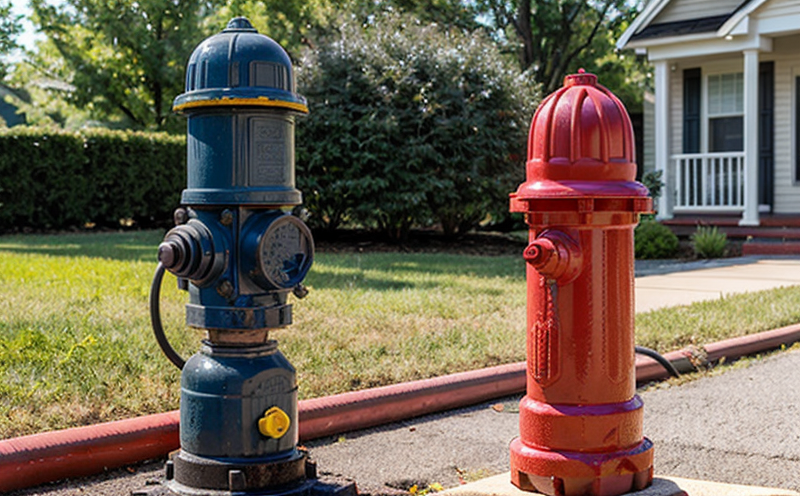Fire hydrant inspection
In the realm of fire safety and protection systems, fire hydrants play a critical role. They are the lifeline to water supply in firefighting operations. A thorough inspection ensures these vital components remain reliable and ready for immediate use during emergencies.
Fire hydrant inspections are conducted to evaluate the integrity, functionality, and compliance of fire hydrants with relevant standards such as NFPA 25 (National Fire Protection Association) and EN 13479. This process involves a series of checks that include visual assessment, pressure testing, flow testing, and leak detection.
Visual inspections are the first line of defense in assessing the overall condition of fire hydrants. They involve checking for signs of corrosion, rust, or physical damage on the exterior and interior components. These inspections ensure that the hydrant is free from obstructions such as debris, ice, snow, or other materials that could impede its function.
Pressure testing verifies that the fire hydrant can withstand the required water pressure without leakage. This ensures it functions correctly when connected to a fire truck's suction hose. Flow testing assesses whether the hydrant provides an adequate volume of water for firefighting purposes, which is critical during high-pressure demands.
Leak detection involves checking for leaks in the hydrant’s internal components and connections. Leaks can reduce the overall performance and reliability of a fire hydrant. Identifying these issues early prevents potential failures that could compromise emergency responses.
In addition to these core inspection procedures, specialized testing may be required depending on local regulations or specific facility needs. This might include testing for compatibility with certain types of firefighting foam or assessing the hydrant’s performance under extreme temperature conditions.
The importance of fire hydrant inspections cannot be overstated. They contribute significantly to public safety by ensuring that critical water supply systems are in optimal condition. Regular inspections help prevent costly repairs and replacements, reduce downtime during emergencies, and enhance overall operational efficiency.
Benefits
- Enhanced Public Safety: Ensures that critical water supply systems are in optimal condition, contributing to public safety.
- Preventive Maintenance: Identifies potential issues early on, preventing costly repairs and replacements.
- Operational Efficiency: Reduces downtime during emergencies by ensuring reliable performance of fire hydrants.
- Compliance with Standards: Ensures that fire hydrant systems meet relevant international standards such as NFPA 25 and EN 13479.
- Cost Savings: Prevents unnecessary expenditures on premature replacements by identifying issues early.
- Increased Reliability: Enhances the overall reliability of fire hydrant systems, ensuring they perform as expected during emergencies.
Why Choose This Test
Selecting a reputable laboratory for fire hydrant inspections is crucial to ensure that you receive accurate and reliable results. Our team of experts uses state-of-the-art equipment and follows rigorous testing protocols to provide comprehensive assessments.
We pride ourselves on delivering detailed reports that not only document the findings but also offer actionable recommendations for maintaining optimal performance. Our commitment to quality ensures that your fire hydrant inspections meet or exceed all relevant standards, providing peace of mind and compliance assurance.
Our laboratories are accredited by recognized bodies such as ISO/IEC 17025, ensuring that our testing processes adhere to the highest industry standards. We employ certified technicians with extensive experience in fire safety systems, guaranteeing that every inspection is conducted with precision and expertise.
We understand the importance of timely inspections and strive to provide rapid turnaround times without compromising on quality. Our flexible scheduling options allow you to choose a time that suits your operations, ensuring minimal disruption to your daily activities.
By choosing our laboratory for fire hydrant inspections, you are investing in the safety and reliability of your critical infrastructure. Our services go beyond just compliance; they contribute to building a safer community by enhancing overall public safety.
Competitive Advantage and Market Impact
In today’s competitive market, maintaining high standards of fire hydrant performance is not only a regulatory requirement but also a strategic business decision. By ensuring that your fire hydrants are regularly inspected and maintained at peak condition, you demonstrate a commitment to safety and compliance.
This proactive approach can significantly impact your reputation as a responsible and reliable organization. It enhances trust among stakeholders, including employees, customers, and the community. Moreover, it positions you ahead of competitors who may not prioritize such measures adequately.
From an operational perspective, regular inspections help minimize downtime during emergencies, ensuring that fire hydrants are always available when needed most. This can lead to reduced costs associated with emergency repairs or replacements due to neglect.
The ability to provide comprehensive reports and actionable recommendations also gives you a competitive edge by offering valuable insights into maintaining optimal performance. These data-driven decisions support better resource allocation, strategic planning, and long-term sustainability of your fire safety systems.
Furthermore, compliance with recognized international standards like NFPA 25 and EN 13479 not only meets regulatory requirements but also sets a benchmark for excellence in the industry. It positions you as an organization committed to best practices, which can attract more business opportunities and partnerships.





